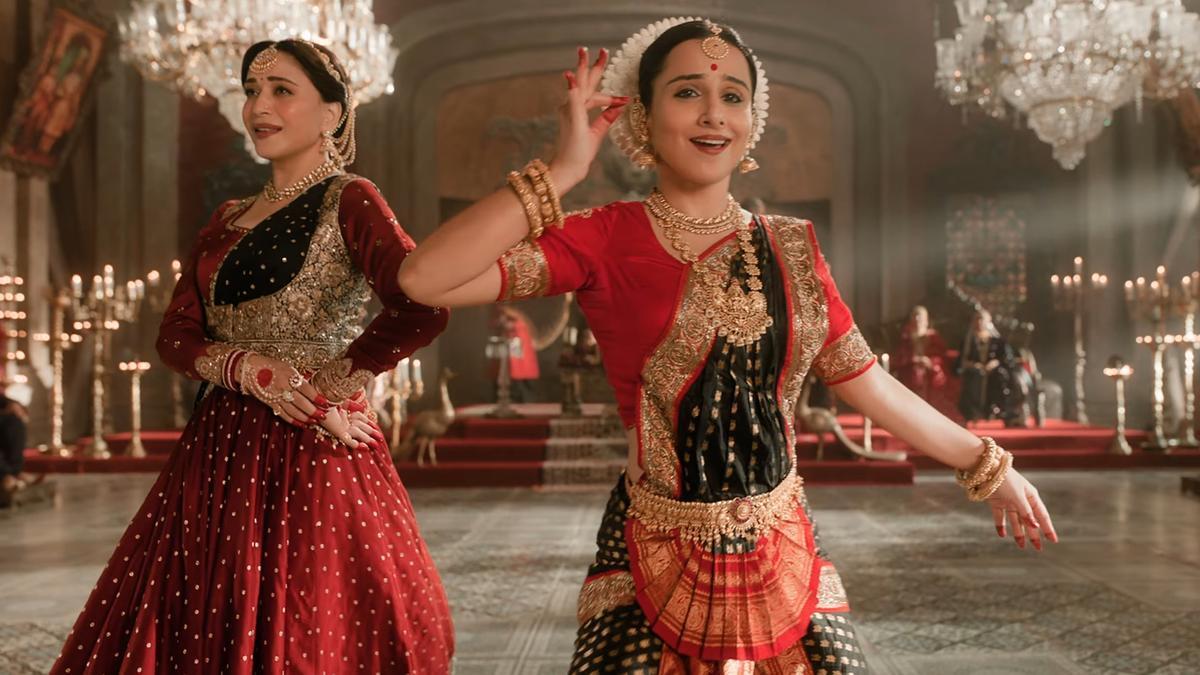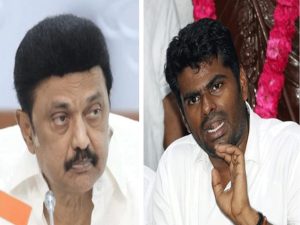
In the heart of the festive season, director Anees Bazmee invites cinephiles to grab their popcorn as he promises comedic spins with his latest offering. This year’s Deepavali showcases his attempt at delivering a vibrant spectacle with “Bhool Bhulaiyaa 3,” but the result is mixed: a green cracker with an unexpected purple residue. The aim appears to be progressive, but in trying to rejuvenate a traditional comedic essence, the film falls flat, unfortunately underutilizing acting titans like Madhuri Dixit and Vidya Balan, who were poised to dazzle the audience.
The latest chapter in the beloved franchise—renowned for reviving Bollywood’s interest in horror comedies—seems hastily assembled, capitalizing on the previous installment’s success. Released after the world was recovering from pandemic-parched entertainment options, the sequel was received with much enthusiasm. However, the third installment comes on the heels of the sharply written “Stree 2,” which succeeded in keeping humor lively till the last frame.
Spanning a lengthy 158 minutes, the film stretches its amusing labyrinth beyond logical limits, while the film’s inherently subversive elements don’t mesh seamlessly with the core narrative. Despite aiming for laughter, it clings to tired tropes, caricaturing Bengalis and their culture for cheap chuckles, before awkwardly attempting a narrative shift towards inclusivity. This abrupt turn transforms the climax into a somewhat hypocritical gesture, rather than genuine progress.
Interestingly, Bazmee doesn’t entirely drop the ball. He infuses moments of keen insight, positing that poverty—or “garibi”—can be more terrifying than apparitions. Paying homage to horror pioneers, the Ramsay Brothers, and integrating notes from the iconic Zee Horror Show, Bazmee crafts some finely executed skits. Yet, a comprehensive script remains elusive. Potential narrative arcs, overlooked by writer Aakash Kaushik, could have elevated the story. Drawn towards simplistic humor, Kaushik opts for juvenile entertainment across age demographics, tacking on a hasty moral at the film’s end.
.
Once again, Kartik Aaryan steps up as the heartbeat of the franchise, channeling Akshay Kumar’s earlier aura with his inherent comedic talent. Playing Ruhaan, a delightful trickster tasked with exorcising the vengeful spirit of Manjulika (for a fee), he navigates through a regal maze, unspooling a tangled backstory steeped in patriarchal hierarchies, misguided pride, and unmet dreamy expectations. Manjulika’s enigmatic past includes a brother resembling Ruhaan and a sister, Anjulika, embroiled in a familial power tussle. While Ruhaan seeks clarity, the narrative zigzags through comedic and chilling bends, highlighting a pressing need for sharper editing. Here, the auxiliary cast, led by Vijay Raaz and Sanjay Mishra, strive to plug comedic voids akin to damp fireworks.
The franchise’s previous installment was invigorated by Tabu’s spirited portrayal of a spectral being. This time, Bazmee brings Madhuri and Vidya to breathe life into the supernatural roles. Both exhibit their captivating styles in the eerie sections, but the centrally Kartik-focused narrative doesn’t adequately leverage their potent screen presence. It’s a rare cinematic moment to see Madhuri explore grey nuances, unveiling her capacity to depict complexly flawed and hubristic characters, yet the film seldom calls upon her full range. Vidya revisits her part from Priyadarshan’s acclaimed original; her character has slimmed down over time, but the franchise itself feels exhausted.
Triptii Dimri assumes a secondary role, supporting the protagonist amidst dull musical interludes and marketing sequences. Her character, scant on substance, seemingly stands as a mannequin for ornamental attire rather than a narrative driver. Despite Deepavali’s star-studded lineup, the true test lies in the scripts’ ability to ensure lasting brilliance.
“Bhool Bhulaiyaa 3,” currently gracing theaters, reiterates a recurring theme in Indian cinema: the necessity for strong storytelling to accompany stellar acting. With the lights dimmed and the multiplex screens aglow, audiences will ultimately decide whether this cinematic mosaic charms or disappoints.












